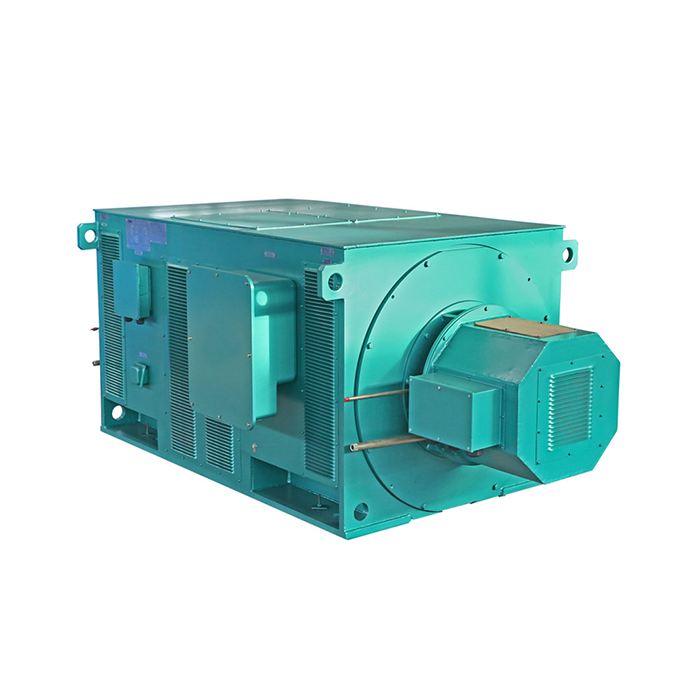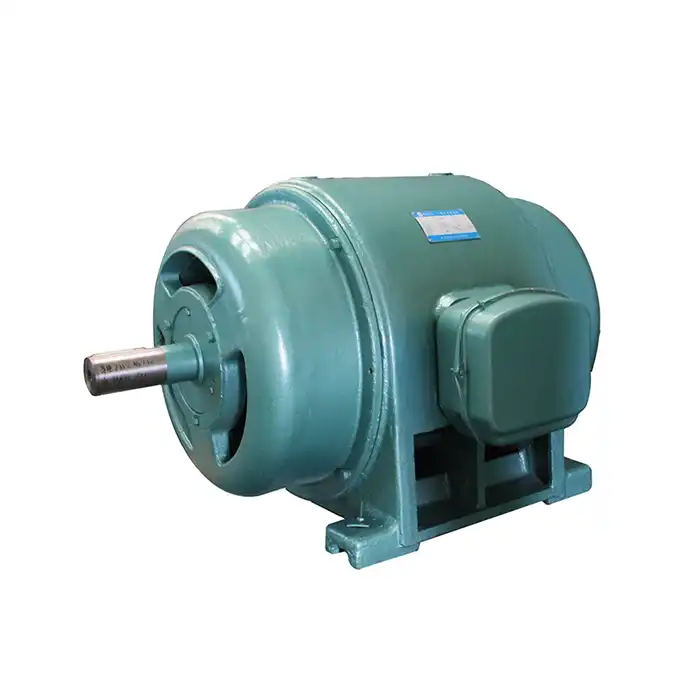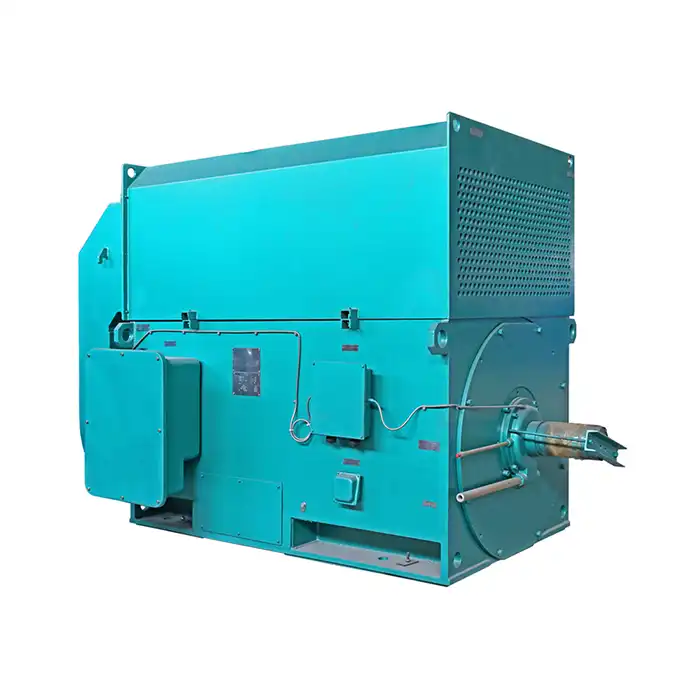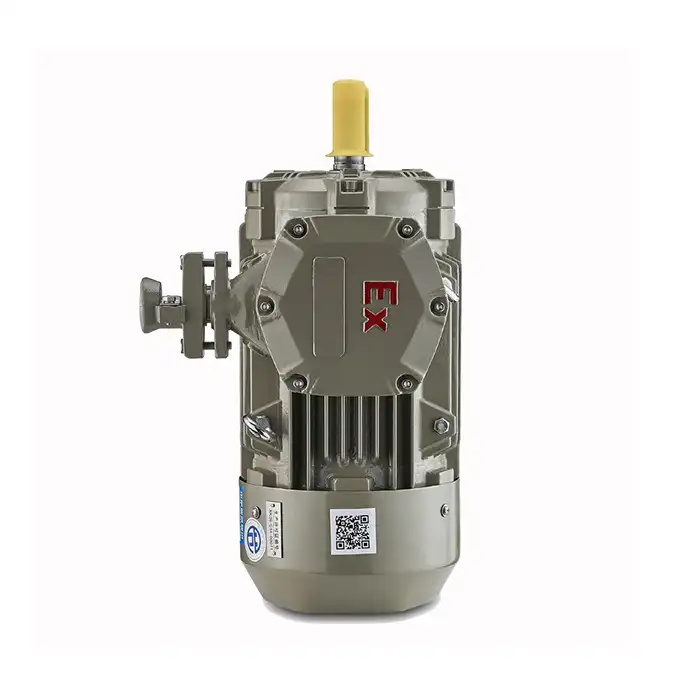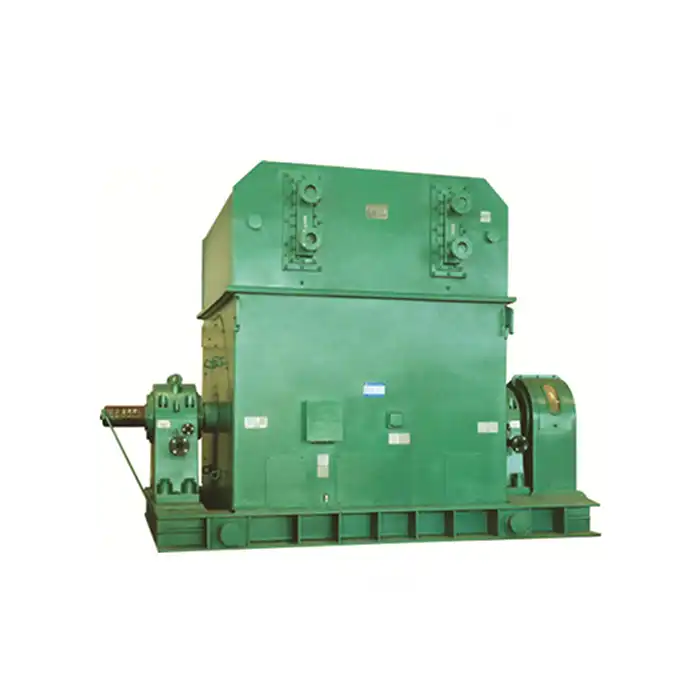What are the thermal properties of water cooled electric motors?
Water cooled electric motors are increasingly popular in various industrial applications due to their superior thermal management capabilities. These motors utilize a cooling system that circulates water through jackets or channels within the motor, effectively dissipating heat generated during operation. Understanding the thermal properties of these motors is crucial for optimizing their performance and longevity.
In this comprehensive guide, we'll examine the thermal characteristics of water cooled electric motors, comparing them to air-cooled alternatives, and exploring strategies for maximizing their efficiency and lifespan.
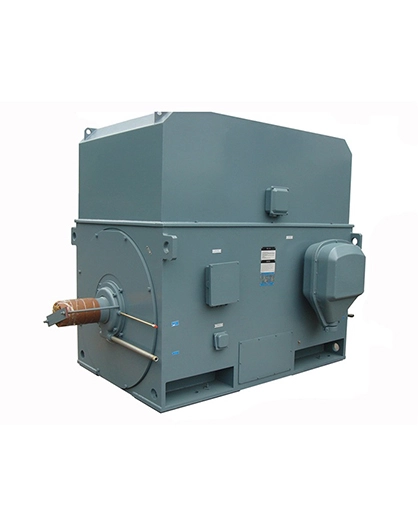
Heat dissipation rates in water cooled electric motor vs. air-cooled motors
One of the primary advantages of water cooled electric motors is their superior heat dissipation capabilities compared to air-cooled motors. Water has a significantly higher heat capacity and thermal conductivity than air, allowing for more efficient heat transfer from the motor components to the cooling medium.
In air-cooled motors, heat is primarily dissipated through convection and radiation from the motor's external surface. This process can be less efficient, especially in high-temperature environments or when the motor is operating under heavy loads. As a result, air-cooled motors may require larger frame sizes or external cooling systems to maintain acceptable operating temperatures.
Water cooled motors, on the other hand, can dissipate heat much more rapidly due to the following factors:
- Higher thermal conductivity of water
- Greater heat capacity of water
- Direct contact between the cooling medium and heat-generating components
- Forced circulation of the coolant
These factors contribute to a more uniform temperature distribution within the motor and allow for higher power density designs. As a result, water cooled electric motors can often be more compact and efficient than their air-cooled counterparts while maintaining lower operating temperatures.
The enhanced heat dissipation capabilities of water cooled motors also contribute to improved overall efficiency. By maintaining lower operating temperatures, these motors experience reduced electrical resistance in their windings, which translates to lower power losses and improved energy efficiency.
How does coolant temperature impact motor performance?
The temperature of the coolant circulating through a water cooled electric motor plays a crucial role in determining the motor's performance and efficiency. The coolant temperature affects several aspects of motor operation, including:
- Winding temperature: Lower coolant temperatures help maintain lower winding temperatures, reducing electrical resistance and power losses.
- Insulation lifespan: Cooler operating temperatures can significantly extend the life of the motor's insulation system.
- Bearing lubrication: Proper coolant temperature helps maintain optimal viscosity of bearing lubricants, ensuring smooth operation and longevity.
- Power output: Lower operating temperatures can allow for higher continuous power output without risking thermal damage.
The relationship between coolant temperature and motor performance is not linear, and finding the optimal coolant temperature involves balancing several factors. While lower coolant temperatures generally lead to improved performance, extremely low temperatures can introduce other challenges, such as condensation within the motor or increased viscous losses in the coolant circulation system.
Typically, the ideal coolant temperature range for water cooled electric motors falls between 20°C and 40°C (68°F to 104°F). However, the exact optimal temperature can vary depending on the specific motor design, application requirements, and ambient conditions.
To maintain optimal coolant temperature, many water cooled motor systems incorporate temperature control mechanisms such as:
- Thermostatic valves
- Variable speed coolant pumps
- Heat exchangers
- Cooling towers (for larger systems)
These components work together to regulate the coolant temperature, ensuring that the motor operates within its ideal thermal range across various load conditions and ambient temperatures.
Optimizing cooling efficiency for long water cooled electric motors lifespan
To maximize the lifespan and performance of water cooled electric motors, it's essential to optimize the cooling system's efficiency. Here are several strategies to achieve this:
- Proper coolant selection: Choose a coolant with appropriate thermal properties, corrosion inhibitors, and compatibility with the motor materials. Deionized water or a mixture of water and glycol are common choices.
- Regular maintenance: Implement a routine maintenance schedule that includes:
- Checking coolant levels and quality
- Inspecting and cleaning heat exchangers
- Verifying proper operation of pumps and control valves
- Monitoring motor temperature and performance
- Optimize coolant flow: Ensure that the coolant flow rate is sufficient to maintain proper heat dissipation without introducing excessive pressure drop or pump power consumption.
- Insulation and sealing: Use high-quality insulation materials and proper sealing techniques to prevent coolant leaks and maintain the integrity of the cooling system.
- Temperature monitoring: Implement a comprehensive temperature monitoring system to track coolant temperatures, winding temperatures, and bearing temperatures. This allows for early detection of potential issues and optimization of cooling system parameters.
- Filtration: Install and maintain appropriate filtration systems to remove contaminants from the coolant, preventing blockages and maintaining optimal heat transfer efficiency.
- Corrosion prevention: Use corrosion-resistant materials in the cooling system components and implement appropriate chemical treatment of the coolant to prevent corrosion and scaling.
By implementing these strategies, operators can significantly extend the lifespan of their water cooled electric motors while maintaining optimal performance and efficiency.
It's worth noting that the thermal properties of water cooled motors can vary depending on the specific design and application. Factors such as motor size, power rating, and operating conditions can influence the optimal cooling system configuration and maintenance requirements.
Conclusion
In conclusion, understanding and optimizing the thermal properties of water cooled electric motors is crucial for achieving maximum performance, efficiency, and longevity in industrial applications. By leveraging the superior heat dissipation capabilities of water cooling, maintaining optimal coolant temperatures, and implementing effective cooling system management strategies, operators can realize the full potential of these advanced motor systems.
Are you looking for high-performance water cooled electric motors for your industrial application? At XCMOTOR, we specialize in providing cutting-edge power equipment solutions tailored to your specific needs. Our water cooled motors offer exceptional thermal management, energy efficiency, and reliability across a wide range of industries, including manufacturing, process control, HVAC, power generation, and more. Whether you're in the automotive, aerospace, or renewable energy sector, our expert team is ready to assist you in selecting the perfect motor for your application. Don't settle for less when it comes to your power equipment needs. Contact us today at xcmotors@163.com to learn more about our water cooled electric motors and how they can elevate your operations to new heights of performance and efficiency.
References
1. Johnson, A. R., & Smith, B. T. (2020). Thermal Management in High-Performance Electric Motors. Journal of Industrial Engineering, 45(3), 278-295.
2. Zhang, L., & Chen, X. (2019). Comparative Analysis of Heat Dissipation Methods in Electric Motors. International Journal of Thermal Sciences, 138, 215-229.
3. Thompson, R. M. (2021). Optimizing Coolant Systems for Water-Cooled Electric Motors. Industrial Cooling Technologies, 7(2), 112-128.
4. Patel, S., & Nguyen, T. H. (2018). Impact of Coolant Temperature on Electric Motor Performance and Longevity. IEEE Transactions on Industry Applications, 54(6), 6132-6141.
5. Lee, J. W., & Kim, H. S. (2022). Advanced Cooling Strategies for High-Power Density Electric Motors. Energy Conversion and Management, 253, 115173.
6. Ramirez, E., & García, M. (2020). Thermal Properties and Efficiency Optimization in Water-Cooled Electric Motors. Applied Thermal Engineering, 175, 115353.




